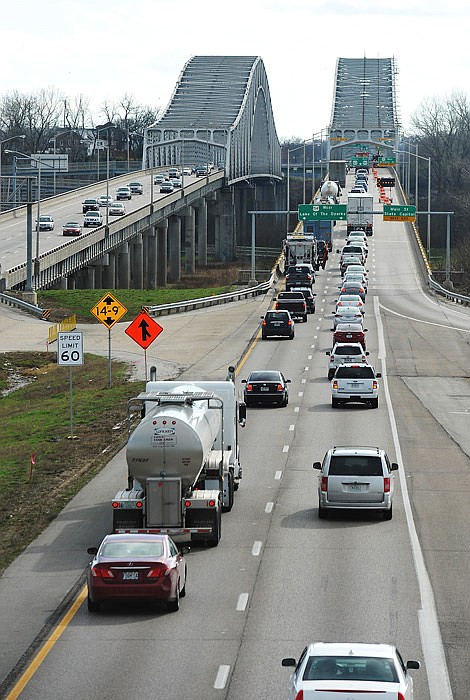Despite a downward trend during the last five years, preliminary data shows Missouri drivers experienced more crashes in 2020.
Staff with the Capital Area Metropolitan Planning Organization doesn't know yet what those numbers look like in the Jefferson City region, but they do expect them to be higher than 2019.
CAMPO updates a traffic crash analysis document annually, which tracks where crashes happen, different crash types, fatalities and serious injuries.
For instance, the CAMPO region saw 1,622 crashes in 2019 with 14 fatalities. Statewide, there were 881 fatalities.
The preliminary data for 2020 lists 987 fatalities statewide, Jefferson City Planner Lee Bowden said.
As of this time last year, the number was at 641 fatalities statewide. So far, the state has reported 645 for 2021, he said.
"We were on a downward trend statewide in the number of fatalities, and our preliminary numbers for 2020 have a significant increase," Bowden said.
Bob Lynch, area engineer for the Missouri Department of Transportation's Central District, said so far, the district has seen 72 fatalities this year. Cole County accounts for five of them.
The Central District extends north to Howard County, south to Laclede County and east to Washington County.
The CAMPO area includes Jefferson City, Holts Summit, St. Martins, Wardsville and Taos.
"If that is consistent within the CAMPO region as well next year, we could see a significant increase in our actual numbers and data within CAMPO," Bowden said.
The increase started in the summer, he noted.
"That's when COVID hit strong, anxiety over a lot of things," he said. "We saw a significant increase there, and we're seeing the exact same trend here in 2021."
While the crash analysis report doesn't aim to explain why crashes happen at certain locations, it can provide information and data about where governments should look at road improvements.
For instance, Bowden said, between 2015-19, the Rex M. Whitton Expressway saw 481 crashes, mostly classified as rear-end or out-of-control crashes. The highest concentration was between Missouri Boulevard and Jackson Street.
The area was recently added to the MoDOT unfunded needs list, as a tier two project, which means it will likely be included in a future Statewide Transportation Improvement Program list.
Bowden said the increase in crashes between 2018-19 - from 1,540 to 1,622 - comes from the Rex M. Whitton Expressway.
"Most of these collisions are rear-ends," he said.
With numbers between 2015-19, other high-crash areas include:
The Missouri River bridge with 252 crashes;
The Tri-Level complex with 158 crashes;
Missouri Boulevard from Country Club Drive to U.S. 50 with 1,272 crashes;
Jefferson Street at U.S. 54 with 158 crashes;
Ellis Boulevard at U.S. 54 with 221 crashes;
U.S. 50 at Dix Road with 102 crashes;
Truman Boulevard at U.S. 50 with 246 crashes;
Missouri 179 interchange with 188 crashes; and
Edgewood Drive and Missouri 179 with 86 crashes.

